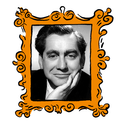Iris Murdoch knew the risks of writing letters. In The Black Prince, her great novel about the destructive power of love, one character observes: “What dangerous machines letters are. Perhaps it is as well that they are going out of fashion. A letter can be endlessly reread and reinterpreted, it stirs imagination and fantasy, it persists, it is red-hot evidence.” She destroyed almost all those she received; but most of her correspondents kept hers, even the young man to whom she wrote in 1969: “Destroy this and all letters. And keep your mouth shut.”
Given that she always preferred to keep her amours and friendships in separate boxes, it seems safe to assume that the exposure of her overlapping relationships would not please her. With the publication of this substantial volume—a selection of 780, all but 40 unpublished—both Murdoch’s admirers, of whom I am one, and her critics, will find plenty to feast on. This is an unprecedented exposure of the heart and mind of a major novelist and thinker (the author of 26 novels and three major works of philosophy) and a woman who lived a life of unusual intellectual and personal freedom.
There has been a good deal written about Murdoch since her death from Alzheimer’s in 1999. Her reputation, at its height during the 1970s (she won the Booker Prize for The Sea, the Sea in 1978), had begun to slip by then. Both her novels, with their intellectual games, symbolism and tangled plots, and her philosophy, always concerned more with values and metaphysics than with logic and linguistics, seemed dated. As she began, as she put it, “sailing into the dark,” it seemed as if Murdoch’s day was done.
What stopped the slide towards obscurity was the publication, between 1999 and 2001, of her widower John Bayley’s three memoirs and Peter J Conradi’s outstanding authorised biography. Then there was Richard Eyre’s film, Iris, in 2001, in which Kate Winslet and Judi Dench as the young and older Murdoch respectively gave their subject a touch of celebrity. The memoirs moved some and infuriated others, focusing as they did on Murdoch’s decline. Conradi’s book was a well-informed, deeply researched and emotionally sophisticated account that concentrated on her early life and years of achievement, but he also recorded a remarkable number of love affairs. He justified these revelations by showing how her philosophy and her fiction explored problems and ideas drawn directly from her own experience. The editors’ diligent and thoughtful work adds to but does not alter his portrait.
Murdoch, an only child, had a secure and loving childhood but no family correspondence has survived. Her life in these letters begins with her as a clever, eager schoolgirl who sails into Oxford to study Classics in 1938, to discover intellectual excitement, love and politics in the shadow of the coming war. She joined the Communist Party and quickly made some of the most enduring friends and correspondents of her life with fellow students including Frank Thompson, Leo Pliatzky and David Hicks. She was lovely to look at and much pursued. “I find myself quite astonishingly interested in the opposite sex,” she wrote to an old schoolfriend in April 1939, “and capable of being in love with about six men all at once—which gives rise to complications and distresses. And too many people are in love with me just at present—which though pleasing to my vanity, is also liable to be annoying and difficult.” Romantic tangles among a group of close friends formed the basis for several future novels. Perhaps her most significant Oxford-forged friendship was with another Somerville philosophy student, the “brilliant and beautiful” Philippa Bosanquet, later the moral philosopher Philippa Foot, whose good opinion she needed throughout her life. Later, she would write that she had been a little in love with her from the start.
From autumn 1939, when the war swept most of her admirers away, her correspondence with and about them intensifies. They discuss the future they hope to see, political and personal; she contemplates writing a novel. “Jesus God how I want to write,” she told Frank Thompson in 1943. “I want to write a long long and exceedingly obscure novel objectifying the queer conflicts I find within myself and observe in the characters of others.” Some would say she went on to do so. Her romance with Frank took place more on paper than in the flesh; after he was killed in 1944, she came to feel that he was her truest love. The heroic soldier, part warrior, part mystic, is a recurrent figure in her novels.
By the time of Frank’s death she was in London, sharing a flat with Philippa, having joined the Treasury in 1942. A later letter to David Hicks, during their brief engagement in 1945, gives a painfully honest account of the damage done when she broke off a love affair with one man, Michael Foot (later the historian MRD, not the politician) to take up with another, Thomas Balogh, the Oxford economist and Philippa’s lover. Feeling she had betrayed them both, when Foot and Bosanquet then married and the affair with Balogh foundered, Murdoch was wretched. After telling Hicks the affair with the predatory Balogh was her first experience of complete passionate love, she then observes: “It’s a quadrilateral tale that would make rather a good psychological novel.” The selfishness of which lovers are capable became a constant theme of her fiction, most clearly in The Black Prince and The Sea, the Sea.
Through the decade after the war, when Murdoch had left the Civil Service to pursue philosophy first briefly at Cambridge and then at Oxford and to write her first novels, the letters show her living at full stretch, exploring ideas and relationships with an almost unnerving avidity, chronicled here in her many letters to the French experimental novelist Raymond Queneau. He introduced her to Sartre and sparked her early enthusiasm for existentialism. He also had a strong influence on her first novel, Under The Net (1954). Her letters to him—and they corresponded for 30 years—reflect her need for an intellectual mentor, preferably also a lover; she made her wishes plain, but the married Queneau preferred an amitié amoureuse. At the same time, there were overlapping affairs with susceptible academics in Oxford and London. That Murdoch disliked some aspects of her own behaviour is indicated in her description of Anna in Under the Net: “To anyone who will take the trouble to become attached to her she will immediately give a devoted, generous, imaginative and completely uncapricious attention, which is still a calculated avoidal of self surrender… This has the sad result too that her existence is one long act of disloyalty.”
Paying attention was, for Murdoch, the foundation of love. Derived in part from her Oxford tutor Donald MacKinnon, whose attention to her had led to some marital trouble, and more substantially from Simone Weil, this belief led her to think that if she gave someone her full attention she could not do him or her any harm. As for sex, as time passed she adhered more closely to the Platonic view that physical love was an intoxicating but fleeting stage on the way to a more elevated, spiritual apprehension.
Another lover, Elias Canetti, the Bulgarian Jewish author who went on to win the Nobel Prize for literature in 1981, was a man who dominated her physically and intellectually, and whose taste for power games fascinated and unnerved her. Her few surviving letters show she needed to hold on to him even after she married the man who brought her a simpler kind of love, the brilliant young Oxford don six years her junior, John Bayley. There are no letters to him included here.
It was a happy, apparently tranquil marriage, but not without difficulties. Affairs with two colleagues at St Anne’s threatened both her marriage and her career, and led to her moving away from Oxford to work at the Royal College of Art in London in 1963. Published here for the first time is a striking run of letters to the bisexual Brigid Brophy, whose flamboyant role-playing and knowledge of the gay scene she enjoyed. But Brophy wanted more than Murdoch was prepared to give, and was also unimpressed with her work; one of the most revealing letters shows Murdoch humbly accepting that Brophy “detested” much about her writing. With Brophy, as with Philippa Foot, Murdoch demonstrated a sadomasochistic streak.
Once Iris had begun a relationship, or a correspondence, she rarely gave up. The time and energy this involved was immense; in the second half of her life, famous and endlessly busy, she would spend up to four hours a day writing letters. She was not an especially elegant or considered letter-writer; her letters are conversational, intimate, affectionate. Her tolerance for the demands of her correspondents was remarkable, even though it could indicate her own need to be endlessly loved and wanted. During the later 1960s she fell into what her editors call, rather primly, some “complex and unwise emotional imbroglios” with two of her RCA students. One of them, David Morgan, in particular tried her patience, gossiping about their romantic friendship and exploiting her financially. He was the one she asked, vainly, to destroy her letters. Instead he kept them for publication.
Love, in Murdoch’s novels, is endlessly various and as much to do with power as higher feelings. In them all, as in her philosophical enquiries, she pursued the truth about human aspirations and behaviour; her letters show the blunders, the self-delusion and the absurdities of which she, like the rest of us, was capable. For her, there were no boundaries between different kinds of love, and sexuality, like gender, was fluid. In 1950 she wrote to Queneau: “I think nothing is really worth anything except a) being happily married b) being a saint c) writing a really good novel. My chances of a) diminish yearly b) is far too difficult—there remains c) which still inspires hope.” In her own way, she managed a) and c). As these letters show, saintliness eluded her; but she kept trying. Anne Chisholm is working on a new edition of Dora Carrington’s letters












